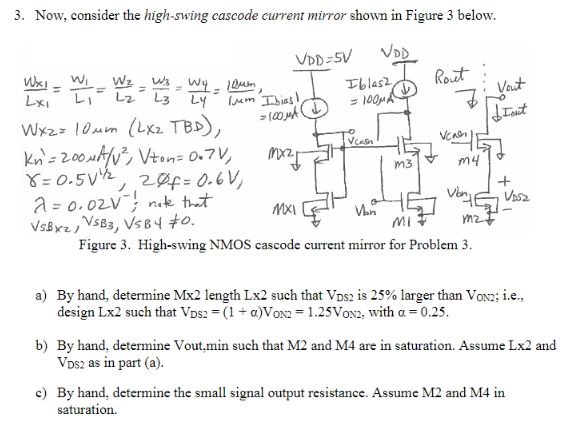Now, consider the high-swing cascode current mirror shown in Figure 3 below. Figure 3. High-swing NMOS cascode current mirror for Problem 3. a) By hand, determine Mx2 length Lx2 such that VDS2 is 25% larger than VON2; i. e. , design Lx2 such that VDS2 = (1+α)VON2 = 1.25VON2, with α = 0.25. b) By hand, determine Vout, min such that M2 and M4 are in saturation. Assume Lx2 and VDS2 as in part (a). c) By hand, determine the small signal output resistance. Assume M2 and M4 in saturation.
